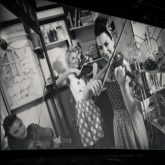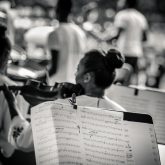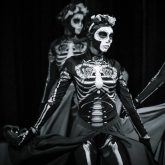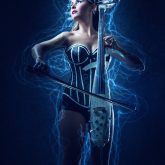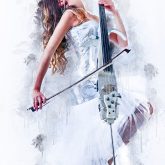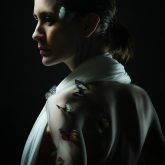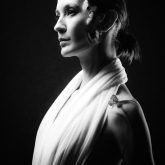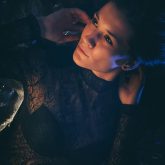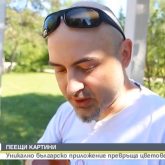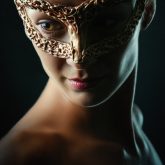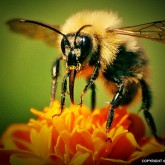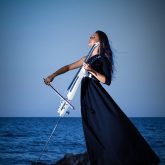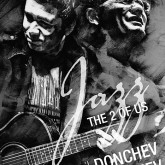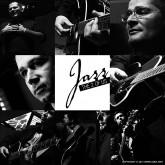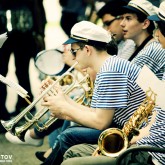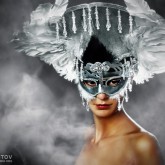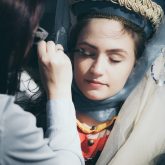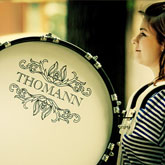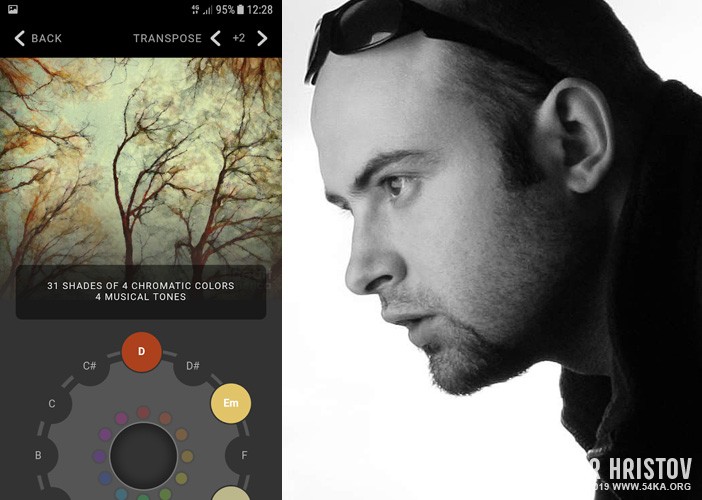 Vivid Harmony is an innovative application for converting images with chromatic colors to music. Developed by artist and photographer Dimitar Hristov – 54ka. This app enables you to compose wonderful tunes on your mobile phone, inspired by any painting or photography.
Vivid Harmony is an innovative application for converting images with chromatic colors to music. Developed by artist and photographer Dimitar Hristov – 54ka. This app enables you to compose wonderful tunes on your mobile phone, inspired by any painting or photography.
How did you get the idea of creating Vivid Harmony?
The reason to come to this, literally scientific discovery in the field of harmony between chromatic color and sound, is my interest in different directions of the arts – visual and music respectively. The crossing points between them turned out to be more than I expected, or if I have to be even more specific – we are talking about a complete overlap in harmony. What, for example, in visual arts and the knowledge of color is called a complementary color, in music is blues. As we can translate the music tones while preserving the relationship between them, we can also translate a visual image, preserving the intervals between the colors.
How does this work?
We have 12 chromatic tertiary colors, we have 12 musical tones when we apply the two scales on top of each other, that allows us to translate them to each other and actually to extract the sound from a visual image and vice versa – to extract the colors from the music.
When talk about complementary colors, it is about achieving maximum dynamics in color harmony. Absolutely the same dynamics we find in consistent musical values.
How can we use this app and what it serves?
You chose a picture, the algorithm calculates the corresponding values of the dominant colors in the image, and returns the music values and the closest music tone that corresponds to your image. Of course, then you can play a melody because these color circles, when you press them, they emit a sound and you can compose anywhere at all times, inspire yourself from your own pictures and pictures or from some landscape you’ve taken with your phone right now.
But there is an important detail that should not be missed, that the eye is actually hungry and the ear is capricious.
What do you mean ?
The eye always needs more information and tends to endure some color that is not in place, while the ear is capricious, because it would not suffer a tone that is not in place, we will immediately feel that there is something wrong in the melody . Of course, as I mentioned – the process is bi-directional.
To whom is this interesting application directed?
The application itself, of course, is aimed at absolutely anyone! It is interesting and entertaining for everybody, there is no specific target audience. For some, it would be inspiration, for others – fun. But in real terms, the application of my work has a much wider scope, we are talking about a complete overlap in the harmony between color and sound! Now you can actually guess how many places this can apply. A very quick and easy example is the performing arts such as ballet, theater, and so on. When we have the best possible overlap and sync between color and sound, we also achieve the most powerful impact.
In fact, the result of my work is a ready formula for achieving this harmony. And the phone application is just the fun part.
How long did it take to develop it?
Developing the mobile app itself was definitely not the most difficult part. Indeed the labor-intensive part, the one that took me more than three years, was the test of this formula! And the verification is by analyzing a great deal of visual and musical works of many different styles in both types of arts. The results were extremely interesting. And this fact inspired my desire to make my research accessible to everyone, even to those who would not be interested in understanding it, but they can enjoy it.
How does this work develop in public?
I am delighted that my research has triggered interest among many circles and people are keen to tell about it.
But the greatest recognition and honor for me was the invitation I received from the National Academy of Art, to which I am an alumnus, to present my work. Telling about something you’ve done to an academic audience, and getting recognition, I think it means a lot.
The performance itself is actually a lecture – a concert. Live, in front of an audience, I show how the retrieval of the values from a visual or musical work happens. And how these values can turn into a picture or instrumental.
For support in musical performances, I turned to my friend and longtime guitar teacher Milen Tomov. I am very happy that he accepted my invitation. Milen is wonderful musician and it is a great pleasure to play together.
Where did you get the inspiration for creating Vivid Harmony?
Paul Klee is the basis for me in the study, he himself, his contribution to our understanding of color, and his contribution to art in general is the same as Newton’s in physics, so I was curious to look at the results I found impressive. The music I draw from his paintings is just wonderful.
It is also interesting that, as we can overflow colors in painting, in exactly the same way we can overflow musical values using mixed – split chords. When I extracted the musical values from watercolors, it was a great pleasure to see exactly this process of intertwined values that really sound wonderful

